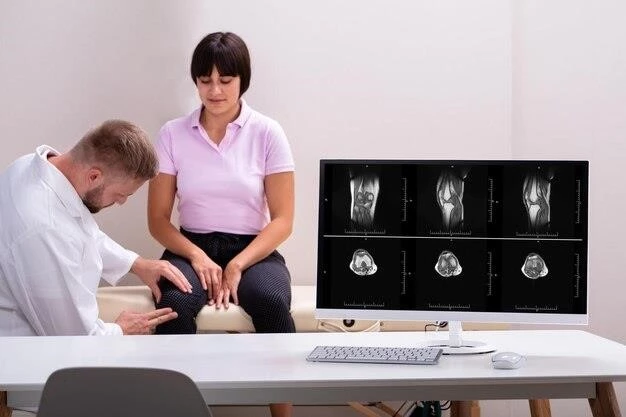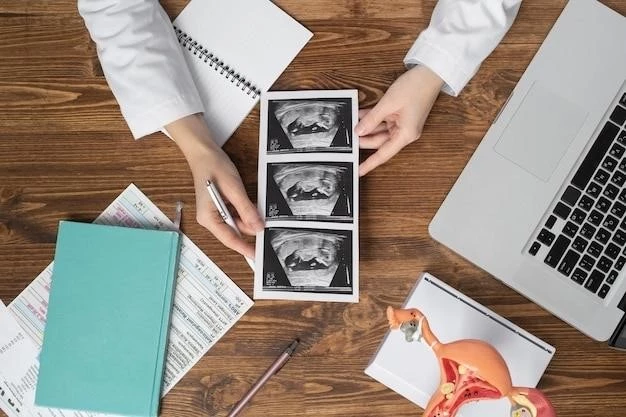Overview of Osteocraniostenosis
Osteocraniostenosis (OCS) is a rare genetic disorder characterized by premature closure of cranial sutures and perinatal lethality. Diagnosis has traditionally been postnatal based on clinical and radiological features. A recent study describes the first prenatal diagnosis of OCS, highlighting the importance of early detection through prenatal ultrasound and targeted Whole Exome Sequencing (WES). This advancement enables informed parental choices and guides effective pregnancy management.
Definition and Characteristics
Osteocraniostenosis (OCS) is a rare genetic disorder characterized by premature closure of cranial sutures and perinatal lethality. The disease presents with gracile bones, unique facial dysmorphism, cloverleaf skull anomaly, and limb shortness. Radiological findings include thin tubular bones with flared metaphyses and deficient calvarial mineralization. Genetic studies have identified mutations in the FAM111A gene as the cause of Osteocraniostenosis, distinguishing it from related conditions. Clinical diagnosis traditionally relies on characteristic skeletal abnormalities and facial features.
Diagnosis of Osteocraniostenosis
Diagnosis of Osteocraniostenosis (OCS) has typically relied on postnatal identification through clinical and radiological features. However, advancements now allow for prenatal diagnosis using targeted Whole Exome Sequencing (WES) following suggestive ultrasound findings. This approach enables early detection and accurate determination of the specific genetic mutation associated with OCS, providing crucial information for informed decision-making in pregnancy management.
Prenatal Diagnosis
Osteocraniostenosis (OCS) can now be diagnosed prenatally using advanced techniques such as targeted Whole Exome Sequencing (WES) based on characteristic ultrasound findings. This approach allows for early identification and precise determination of the specific genetic mutation associated with OCS, facilitating informed decision-making and appropriate management strategies during the pregnancy period.
Postnatal Diagnosis
Diagnosis of Osteocraniostenosis (OCS) postnatally has traditionally relied on recognizing the characteristic clinical and radiological features of the condition. Imaging studies often reveal the unique skeletal abnormalities and facial dysmorphism associated with OCS, which aid in confirming the diagnosis. Clinicians also consider the patient’s medical history and may conduct genetic testing to identify mutations in the FAM111A gene, which is linked to OCS. Postnatal diagnosis plays a crucial role in initiating appropriate management and treatment strategies for individuals affected by OCS.
Genetic Basis of Osteocraniostenosis
Osteocraniostenosis (OCS) is caused by mutations in the FAM111A gene, associated with distinctive skeletal abnormalities including premature closure of cranial sutures. These mutations distinguish OCS from other related conditions and play a fundamental role in the disease’s pathogenesis.
FAM111A Gene Mutations
Mutations in the FAM111A gene have been identified as the underlying cause of Osteocraniostenosis (OCS). These mutations contribute to the unique skeletal abnormalities observed in OCS patients٫ including the premature closure of cranial sutures and gracile bones. Understanding the impact of FAM111A gene mutations is crucial in diagnosing and managing individuals affected by this rare genetic disorder.
Clinical Features of Osteocraniostenosis
Osteocraniostenosis (OCS) is characterized by skeletal abnormalities like facial dysmorphism and cloverleaf skull anomaly, distinct facial features, limb shortness, and radiographic anomalies, contributing to unique clinical presentations. The condition is identified through a combination of physical examination and radiological imaging, focusing on the typical features associated with OCS. Understanding these clinical characteristics is essential for accurate diagnosis and appropriate management strategies.
Skeletal Abnormalities
Osteocraniostenosis (OCS) presents with distinct skeletal abnormalities including cloverleaf skull anomaly, facial dysmorphism, limb shortness, and peculiar radiographic features. These skeletal manifestations, such as thin tubular bones with flared metaphyses and deficient calvarial mineralization, are critical diagnostic markers for identifying individuals with OCS.
Facial Dysmorphism
Osteocraniostenosis (OCS) is characterized by distinct facial dysmorphism, including a short nose, short philtrum, and a small, inverted V-shaped mouth. These facial features, combined with other skeletal abnormalities, contribute to the unique clinical presentation of OCS and aid in its diagnosis.
Radiological Findings in Osteocraniostenosis
Radiological findings in Osteocraniostenosis (OCS) typically include thin tubular bones with flared metaphyses and deficient calvarial mineralization. These unique skeletal features are crucial for diagnosing individuals affected by OCS.
Imaging Characteristics
Radiological imaging in Osteocraniostenosis (OCS) reveals unique skeletal features such as thin tubular bones with flared metaphyses and deficient calvarial mineralization. These imaging characteristics play a crucial role in the diagnosis and management of individuals with OCS, providing valuable insights into the skeletal abnormalities associated with the condition.
Histopathological Abnormalities in Osteocraniostenosis
Histopathological investigations in Osteocraniostenosis (OCS) reveal abnormalities of the metaphyseal cartilage, excessive modelling of metaphyses, and dysplasia of the epiphyseal cartilage. These findings contribute to the understanding of the disease’s pathophysiology and clinical presentation.
Cartilage and Bone Abnormalities
Histopathological examinations reveal abnormalities of the metaphyseal cartilage, excessive modelling of the metaphyses, and, in some cases, epiphyseal cartilage dysplasia in individuals with Osteocraniostenosis (OCS). These findings play a crucial role in understanding the pathophysiology and clinical manifestations of this rare genetic disorder.
Differential Diagnosis of Osteocraniostenosis
Distinctive features of Osteocraniostenosis (OCS) differentiate it from other conditions such as Kenny-Caffey syndrome. The cloverleaf skull anomaly and unique skeletal and radiological abnormalities aid in distinguishing OCS from similar disorders. Additionally, facial dysmorphism and limb shortness are key characteristics used in the differential diagnosis of OCS.
Distinction from Similar Conditions
Osteocraniostenosis (OCS) is differentiated from other conditions like Kenny-Caffey syndrome by the presence of cloverleaf skull anomaly, unique skeletal abnormalities, and distinct radiological features. Facial dysmorphism and limb shortness further aid in distinguishing OCS from similar disorders. Understanding these differences is crucial for accurate diagnosis and appropriate management of individuals with OCS.
Specialists in Osteocraniostenosis Research
Experts in Osteocraniostenosis research are individuals who have made significant contributions to understanding and treating this rare genetic disorder. These specialists have conducted research, received grants, authored articles, and participated in clinical trials focusing on Osteocraniostenosis, making them valuable sources of knowledge in the field.
Key Researchers and Experts

Key researchers and experts in Osteocraniostenosis (OCS) have made substantial contributions to understanding this rare genetic disorder. Their expertise encompasses various aspects of OCS, including diagnosis, genetic mutations, clinical manifestations, and potential treatments. These specialists have conducted significant research, published influential articles, and actively participated in advancing knowledge and care for individuals with OCS.
Support Groups for Osteocraniostenosis
Support groups for Osteocraniostenosis provide valuable resources and community support for individuals and families affected by this rare genetic disorder. These groups offer guidance, information, and emotional assistance to help navigate the challenges associated with Osteocraniostenosis. Joining support groups can provide a sense of belonging and access to shared experiences, ensuring individuals receive the necessary support and advocacy.
Community Resources and Advocacy
Community resources and advocacy groups play a vital role in supporting individuals and families affected by Osteocraniostenosis (OCS). These groups provide valuable information, emotional support, and guidance to navigate the challenges associated with this rare genetic disorder. By offering a platform for shared experiences and knowledge, community resources and advocacy groups empower individuals to access necessary support and advocate for improved care and understanding of OCS.
Treatment Options for Osteocraniostenosis
Treatment options for Osteocraniostenosis are limited and mainly focus on symptom management and supportive care to address the skeletal abnormalities and associated complications. Strategies often involve a multidisciplinary approach, including orthopedic interventions, nutritional support, and monitoring for potential complications. Early detection and individualized care plans are essential in optimizing outcomes for individuals with Osteocraniostenosis.
Management Strategies
Management of Osteocraniostenosis focuses on symptomatic relief, supportive care, and multidisciplinary interventions to address skeletal abnormalities and associated complications. Orthopedic measures, nutritional support, and vigilant monitoring are essential components of the management plan. Early detection and individualized strategies play a crucial role in optimizing outcomes for individuals affected by Osteocraniostenosis.
Prognosis and Outlook for Individuals with Osteocraniostenosis
The prognosis for individuals with Osteocraniostenosis is often poor due to the severity and lethal nature of this skeletal dysplasia. The condition is characterized by notable skeletal abnormalities and distinct facial features, leading to significant challenges in both diagnosis and management. Early detection through prenatal ultrasound and targeted Whole Exome Sequencing (WES) can provide crucial prognostic information, allowing for informed decision-making regarding pregnancy management and potential outcomes. Continued research and advancements play a vital role in improving the understanding and long-term outlook for individuals affected by Osteocraniostenosis.
Long-Term Implications
The long-term implications for individuals diagnosed with Osteocraniostenosis are notably challenging due to the severe and often lethal nature of this genetic disorder. The distinct skeletal abnormalities, facial dysmorphism, and associated complications pose ongoing medical and quality-of-life concerns. Effective management strategies, multidisciplinary interventions, and ongoing research efforts are essential to improve the long-term outcomes and quality of life for individuals living with Osteocraniostenosis.
Future Directions in Osteocraniostenosis Research

Future research directions in understanding Osteocraniostenosis (OCS) aim to focus on identifying novel treatment options, improving diagnostic methods, and exploring potential genetic therapies. By delving into advanced genetic sequencing technologies and studying molecular pathways associated with OCS, researchers aim to enhance early detection, develop targeted interventions, and ultimately improve the long-term outcomes for individuals affected by this rare genetic disorder.
Advancements in Understanding and Treatment
Advancements in research for Osteocraniostenosis aim to identify novel treatment options, improve diagnostic methods, and explore genetic therapies. By leveraging advanced genetic sequencing technologies and delving into molecular pathways associated with Osteocraniostenosis, researchers strive to enhance early detection, develop targeted interventions, and ultimately improve long-term outcomes for individuals affected by this rare genetic disorder.
